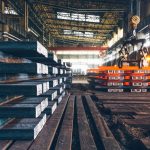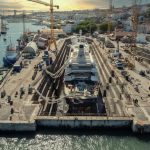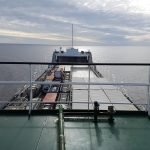Lloyd’s Register’s Maritime Decarbonisation Hub and the Mærsk Mc-Kinney Møller Center for Zero Carbon Shipping are to develop guidance on the safe use of ammonia as a marine fuel.
Together with other partners – AP Moller-Mæersk, MAN Energy Solutions, Mitsubishi Heavy Industries, NYK Line, and Total – the group aims initially to develop a detailed understanding of risk and safety concerns with a quantitative risk assessment methodology. This will lead to the creation of best practices and safeguards in the design and shipboard arrangements for using ammonia as fuel, the partners said.
Although ammonia is already widely transported by sea, it is highly toxic and its use as a marine fuel is generating concern over risks to people, assets and the environment. It is, nevertheless, a zero-carbon option and, in its green form, can be produced using renewable power by the electrolysis of water.
The project, funded by the participating partners, is expected to run through 2021. The group will assess different vessel designs, optimised for ammonia as a fuel.
Claus Winter Graugaard, head of Onboard Vessel Solutions at the Mærsk Mc-Kinney Møller Center for Zero Carbon Shipping, commented: “In the eagerness to decarbonise the shipping sector, proper risk management is critical, and safety must not become an afterthought. This project will provide matured understanding of safety risk, enabling industry guidance towards future safeguard design and adequate operational guidelines.”
Speaking for Lloyd’s Register, Charles Haskell, manager of the classification society’s Decarbonisation Programme, said: “Shipping needs collaboration if the industry is to successfully meet the IMO 2050 targets, and this collaboration between the LR Maritime Decarbonisation Hub and the Mærsk Mc-Kinney Møller Center for Zero Carbon Shipping is a significant milestone in this journey.
“We look forward to working with the project partners, who each represent different areas of the supply chain, in developing guidance, risk mitigation measures, and best practice on using ammonia, so that we can support the safe uptake of the fuel.”
Source: Seatrade Maritime






